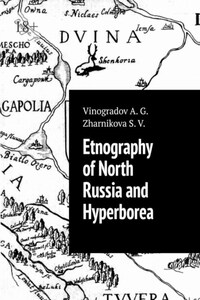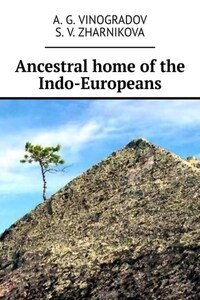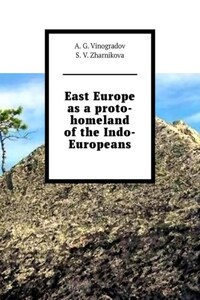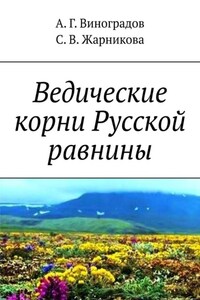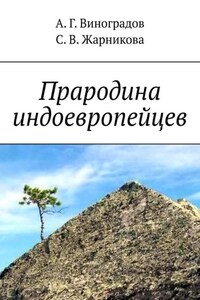Problems of localization of the ancestral home of the Indo-Europeans
The problem of localization of the ancestral homeland of Indo-European peoples has been facing science for a long time. As far back as the mid-18th century, the linguistic kinship of European peoples was noted, and in 1767, Kerdu pointed out the proximity of a number of European languages to Sanskrit, the language of the sacred texts of Ancient India «Vedas. «The decisive for the emergence of Indo-European studies was the discovery of Sanskrit, acquaintance with the first texts on it and the enthusiasm that began with ancient Indian culture, the most striking reflection of which was the book of F. von Schlegel» On the language and wisdom of Indians ” (1808), writes V. N. Toporov. F. von Schlegel, the first to express the idea of a single ancestral home of all Indo-Europeans, placed this ancestral home on the territory of Hindustan. However, the fallacy of this assumption was soon proved, since before the arrival of the Aryan (Indo-European) tribes, India was inhabited by representatives of another language family and another one-time type – black Dravids.
Assumed at different times as the ancestral home of the Indo-Europeans (today this is the people of 10 language groups: Indian, Iranian, Slavic, Baltic, German, Celtic, Romance, Albanian, Armenian and modern Greek): India, the slopes of the Himalayas, Central Asia, Asian steppes, Mesopotamia, Near and Middle East, Armenian Highlands, territories from Western France to the Urals between 60° and 45° N, territory from the Rhine to the Don, Black Sea-Caspian steppes, steppes from the Rhine to Hindu Kush, areas between the Mediterranean and Altai, in Western Europe – currently, for one reason or another, most researchers rejected.
It should be noted that the Soviet historical school until the beginning of the 30s of the 20th century proceeded from the definition of the ancestral home of the Indo-Europeans based on the works of A. A. Shakhmatov and L. I. Niederle. The ancestral home of the Indo-Europeans, based on naturally geographical factors, was placed by them in Moravia and Silesia. At the same time, the ancestral home of the East Indo-Europeans (Slavs, Albanians, summer-Lithuanians, Armenians, Indo-Iranians) was placed in the Moscow and Tver regions, in the upper Dnieper.
The ancestral home was placed by the Baltov in the Minsk and Vitebsk regions.
The ancestral home of the Slavs was located by them from Prussia to Pskov, along the banks of the Neman, Dvina and the Gulf of Riga. It was assumed that later the East Indo-Europeans moved south along the Dnieper, to the Black Sea, where the Aryans formed – the Indo-Iranians, who then left the Don to Iran and India. Slavs moved to Poland and further to the Balkans, Carpathians and Ukraine.
Similar scientific hypotheses were then replicated, in particular, in K. Kudryashov’s mass-circulation «Russian Historical Atlas» issued by the State Publishing House in 1928. Despite fundamentally different scientific views, this work was supported and approved by academicians M. N. Pokrovsky, S. F. Platonov, S. V. Voznesensky, B. D. Grekov, N. S. Derzhavin, Yu. G. Oksman, P F. Preobrazhensky, A. E. Presnyakov, O. N. Serbina, A. V. Shebalov.
But then, in 1929, «Russian history» itself was recognized as counter-revolutionary, and in 1932—36 the theory of the ancestral home was declared by communist ideologists – not Bolshevik, fascist and anti-scientific.
![]()
Russian historical atlas of K. Kudryashov
Among the hypotheses formulated in recent years, I would like to dwell on two in more detail: V. A. Safronov, who proposed in his monograph Indo-European Ancestral Homes the concept of the three ancestral homelands of Indo-Europeans —
in Asia Minor, the Balkans and Central Europe (Western Slovakia), and T.V. Gamkrelidze and V.V. Ivanov, who own the idea of the Near-Asian (more precisely, located on the territory of the Armenian Highlands and adjacent areas of Western Asia) the ancestral home of the Indo-Europeans, spelled out and argued by them in the fundamental two-volume «Indo-European language and Indo-Europeans».
V. A. Safronov, referring to the work of N. D. Andreev, emphasizes that on the basis of the Early Indo-European (hereinafter RIE) vocabulary, we can conclude that «early Indo-European society lived in cold places, may be in the foothills, in which there were no large rivers, but rivulets, streams, springs; rivers, despite the rapid flow, were not an obstacle; crossed through them in boats. In winter, these rivers froze, and in spring they spilled scattered and swamps… The climate of the RIE ancestral homeland was probably sharply continental with severe and cold winters, when the rivers froze, strong winds blew; «in a stormy spring with thunderstorms, heavy snowmelt, river spills, hot dry summers when the grass was drying out, there was not enough water.» The early Indo-Europeans had early phases of agriculture and cattle breeding, although hunting, gathering and fishing did not lose their significance. Among the tamed animals are a bull, a cow, a sheep, a goat, a pig, a horse and a dog that guarded the herds. V. A. Safronov notes that: «Riding was practiced by the early Indo-Europeans: what animals were circled around is not clear, but the goals are obvious: taming.» Agriculture was represented by a hoe and fire-arm form, processing of agricultural products was carried out by grinding grain. The early Indo-European tribes lived settled; they had different types of stone and flint tools, knives, shelters, scrapers, axes, adzes, etc. They exchanged and traded. In the early Indo-European community, there was a difference in childbirth, taking into account the degree of kinship, and juxtaposition of friends and foes. The role of women was very high. Particular attention was paid to the «progeny generation process», which was expressed in a number of root words that passed into the Early Indo-European language from the boreal parent language.
